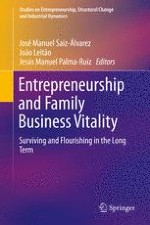2020 | OriginalPaper | Buchkapitel
Generational Diversity as a Moderator for the Relationship Between Absorptive Capacity and Innovation Performance at Family Firms
verfasst von : Gloria Charão Ferreira, João M. Ferreira
Erschienen in: Entrepreneurship and Family Business Vitality
Verlag: Springer International Publishing
Aktivieren Sie unsere intelligente Suche, um passende Fachinhalte oder Patente zu finden.
Wählen Sie Textabschnitte aus um mit Künstlicher Intelligenz passenden Patente zu finden. powered by
Markieren Sie Textabschnitte, um KI-gestützt weitere passende Inhalte zu finden. powered by
